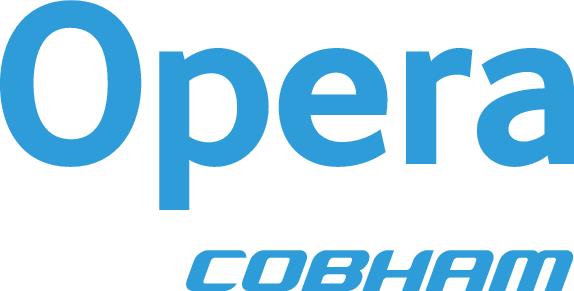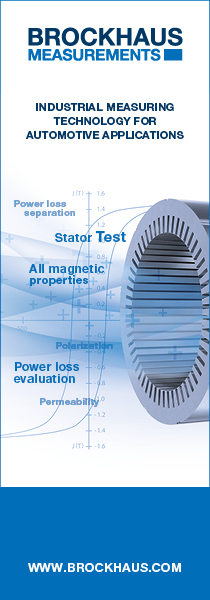Extending the Magnetic Range
UKMagSoc
Jun 21st 2017 - Jun 21st 2017
Abingdon,
Updated 29/06/17
Applications of superconducting magnets occur across many areas of science and engineering. This seminar encompasses developments in many of the fields of engineering associated with superconductivity.
At the lower end of the magnetic range, a new generation of quantum sensors measuring down to femto Tesla are being developed with new applications emerging. A range of materials work on next generation superconductors is focused on engineering devices working at higher temperatures or at extremely high magnetic fields. Some next generation magnet systems under development using this underpinning superconductor technology are emerging or already established. At the upper end of the magnetic range, the detector and the beam shaping magnets for CERN accelerators are of great interest and the active development of fusion technology around the world completes the picture for a wide ranging seminar.
IMPORTANT ATTENDANCE INFORMATION
Please note that Culham Conference Centre is situated at Culham Science Centre which is a secure site and all external visitors must sign in at the main gate reception and produce a form of identification – passport or driving licence is preferred.
If you wish to attend this event you must register online and bring a form of ID. We have to submit delegate details 48 hours prior to arrival. If you leave it less than 48 hours before the event or turn up on the day, you will not be able to gain access to the secure site.
TRAVEL
The venue is at Culham Science Centre, Oxfordshire.
More information on finding the venue is available here, or on Google maps.
DRESS CODE
The dress code for the day is business attire / smart casual.
SPONSORS
We are grateful to our sponsors:


Speakers
High Field Superconducting Magnets
by Dr Andrew Twin of Oxford Instruments Nanoscience
Research using superconducting magnets has become diverse and wide ranging. In recent times, the field of quantum information processing (QIP) requires user friendly, ultra low temperatures coupled with high magnetic fields. This has led to a range of cryogen free magnets integrated onto dilution refrigerators operating up to 18 Tesla. More traditional, liquid Helium filled cryostats are used to study samples in very high magnetic fields. Some of the development work enabling ultra high fields (>25 Tesla) is described.
Trends in Accelerator and Detector Magnet Projects
by Mr Arnaud Foussat of CERN
During the past decade, there has been a steady demand from HEP to increase the energy of the produced accelerated particles.
Since last European Strategy Forum on Research Infrastructures (ESFRI) Roadmap of 2008, it has become a first priority ‘to fully exploit the physics potential of the LHC. The exploitation of the full potential of the LHC includes the high luminosity upgrade Project of the machine and detectors with a view to collecting ten times more data than in the initial design, by around 2030’.
The recent realization of unprecedented scientific endeavors, like the LHC machine, the recent EU-XFEL, ESS that have recently projected Europe as worldwide leadership through collaborations between European Technology Facilities and Industry, allow to put in place some series procurement plans of high field accelerators magnet
A subsequent major upgrade project the High Luminosity LHC at CERN has been launched since 2015, which is motivated by physics results and operation experience, enabled by focused 'R&D’.
The new HL-LHC accelerator shall require new equipments upgrades in particular several high field magnets 12 T inner triplet insertion Quadrupoles to reach low Beta performance operation, some new 11T dipoles in the dispersion suppressor region around two Physics experiment interaction points. This magnet construction program is extended with several sets of quadrupole matching sections, field harmonic correctors and dedicated orbit correctors.
Recent good results on Nb3Sn 11 T dipole short models manufactured at CERN within long magnets facility allow to harness the technology and manufacture procedures to envisage the prospect of some short series accelerator-like dipole and quadrupole magnets production.
As a middle term scientific program the HEP community is fully engaged in preparation of the 100 TeV circular FCC accelerator baseline and its CDR is expected from 2018 2019 which will also define the new High Field magnets conceptual design in the reach of 16 T magnetic field.
Some innovative ideas of 100 TeV range collider detector magnets are also relatedly under study, requiring development of new 50kA-class conductor. The enabling technology like HTS is considered as prime choice for a coming breakthrough in uncharted higher field regions; The starting FCC magnet R&D program through European collaboration has two main goals which are first to extend the range of operation of accelerator magnets based on Low Temperature Superconductors (LTS) up to 16 T and explore the technological challenges inherent to the use of High Temperature Superconductors (HTS) for accelerator magnets in the 20 T range.
You must be a member to download papers. Membership Information...
TBD
by Dr M'hamed Lakrimi of Siemens Magnet Technology
Bulk, Melt Processed (RE)BCO Superconductors for High Field Applications
by Prof David Cardwell of Cambridge University
(RE)-Ba-Cu-O [(RE)BCO, where RE = rare earth element such as Y, Nd, Sm, Eu, Gd, etc.] high temperature superconductors (HTS) have significant potential for high field engineering applications at 77 K when fabricated in the form of large single grains by the so-called top seeded melt growth process (TSMG). A novel Y2Ba4CuMOy (Y-2411, where M = U, Zr, Hf, Nb, Ta, W and Mo) phase that is effective at pinning magnetic flux quanta in bulk (RE)BCO HTS on the nm scale has been developed at Cambridge with a number of desirable properties, including crystallographic compatibility with the superconducting (RE)Ba2Cu3O7 (RE-123) phase, chemical stability at the melt processing temperature and an ability to resist coarsening during the melt process. This novel phase, which is more effective at pinning flux than the RE2BaCuO5 (RE-211) phase produced as a by-product of the melt growth process, has been used to develop a practical processing method for the fabrication in air of large, single grain RE-Ba-Cu-O superconductors. The process also includes a new type of generic seed crystal (Mg-doped NdBCO) that can promote effectively the epitaxial nucleation of any (RE)-Ba-Cu-O system and secondly by suppressing the formation of (RE)/Ba solid solution in a controlled manner within large (RE)BCO grains processed in air. This process has enabled fabrication of single grain samples of GdBCO that exhibit a record trapped field of 17.6 T at 26 K. Recent further developments in infiltration and growth, multi-seeding techniques for the fabrication of larger sample of conformal geometry and a practical pulsed field magnetization of bulk single grains has improved further the prospects of these technologically important materials for practical applications, which will also be presented.
You must be a member to download papers. Membership Information...
The Oxford Centre for Applied Superconductivity
by Prof Chris Grovenor of Oxford University
An introduction to the work of the CfAS, with examples of projects being undertaken with our industrial partners on future jointing technologies for magnets
You must be a member to download papers. Membership Information...
New Magnetometers: Low Temperature Platform and Sensors
by Prof Richard Haley of Lancaster University
In collaboration with Oxford Instruments on an InnovateUK-sponsored study, we have worked to develop novel magnetometers combined with a new cryofree low temperature environment. We have studied the feasibility of several new devices which have the potential to go beyond traditional SQUIDS in terms of sensitivity, functionality and operability. One of our most promising candidates comprises a DC SQUID architecture with tuneable Josephson junctions made from high quality graphene. These "G-SQUIDS" have been fabricated at the National Graphene Institute in Manchester and tested in a range of environments, including IsoLab, our new low noise laboratory at Lancaster University.
You must be a member to download papers. Membership Information...
Large Array SubfemtoTesla Magnetometry Using High Signal-to-Noise Quantum Interference Devices
by Prof Gary Green of York Instruments
Until recently, the most sensitive magnetometers that were readily available were Superconducting Quantum Interference Devices (SQUIDs). Commercially available SQUID devices typically had a sensitivity limited by a noise floor equivalent to a few femtoTesla. But recent research and applied applications would benefit by an extension of the sensitivity of magnetometers. This talk addresses how this might be achieved.
A good example of a healthcare application where increased sensitivity is desirable is biomagnetometry. Neural activity is associated with the flow of electrical current and, hence, the generation of magnetic fields. SQUIDs have been used for some time to measure these fields but have a number of characteristics that limit their use including low frequency 1/f noise. It is also now known that subfemtoTesla sensitivity is required to detect high frequency bursts that are associated with localised neural activity and are not visible using standard techniques.
Hybrid superconductor-normal metal-superconductor devices can be used as magnetometers by exploiting Andreev Reflections. We, York Instruments and Oxford instruments, have used the novel designs from Royal Holloway University to create commercial large scale wafers of magnetometers that allow much higher signal to noise measurements when compared to SQUIDs in a liquid Helium-free cryostat which incorporates a large array of detectors. The challenges in achieving this will be discussed.
The future of magnetometry using optical devices with even higher sensitivity and higher spatial resolution will be described.
You must be a member to download papers. Membership Information...
HTS Cables for Accelerator Magnets, Bus Bars and Power Distribution
by Prof Yifeng Yang of Southampton University
This talk gives an overview of recent research activities on HTS superconducting cables for accelerator magnets, bus bars and power distribution. With the increased availability and performance of the YBCO 2G conductors, different cables geometries are being examined with substantial research effort. On the accelerator magnets front, EuCARD2 has focused on Roebel cables, while other configurations such as CORC, Rutherford and tape stacks are also under investigation. For bus-bar and power transmission, MgB2 cables offer an exciting prospect in terms of affordability, synergy with other superconducting applications, and relaxation of cooling requirements. The High Luminosity Upgrade of the LHC (HL-LHC) provides a unique commercial and engineering opportunity for such cables. The high current capacity of HTS cables brings the requirement for high capacity current leads. The experiences from LHC and ITER as well as the present effort for the HL-LHC will be discussed.
You must be a member to download papers. Membership Information...
Magnetic Confinement Fusion: Coil Designs and the Importance of High Field
by Mr Michael Kovari of UKAEA
Until 1978, the development of magnetic confinement fusion was a story of steadily increasing magnetic fields. Surprisingly, since then, magnetic fields have generally decreased. There is controversy as to what type of superconductor will be most suitable for a fusion reactor.
You must be a member to download papers. Membership Information...
Programme
| Time | Session Title | Session Host |
|---|
| 09:00 | Registration Opens | |
| 09:45 | Welcome | |
| 10:00 | Magnetic Confinement Fusion: Coil Designs and the Importance of High Fields | Mr Michael Kovari, UKAEA |
| 10:30 | Trends in Accelerator and Detector Magnet Projects | Mr Arnaud Foussat, CERN |
| 11:00 | Coffee | |
| 11:30 | The Oxford Centre for Applied Superconductivity | Prof Chris Grovenor |
| 12:00 | Bulk, Melt Processed (RE)BCO Superconductors for High Field Applications | Prof David Cardwell, Cambridge University |
| 12:30 | TBD | Prof Yifeng Yang, Southampton University |
| 13:00 | Lunch | |
| 14:00 | New Magnetometers: Low Temperature Platform and Sensors | Prof Richard Haley, Lancaster University |
| 14:30 | Large Array SubfemtoTesla Magnetometry Using High Signal-to-Noise Quantum Interference Devices | Prof Gary Green, York Instruments |
| 15:00 | Coffee | |
| 15:30 | TBD | Dr M'hamed Lakrimi, Siemens Magnet Technology |
| 16:00 | High Field Superconducting Magnets | Dr Andrew Twin, Oxford Instruments |
| 16:30 | Closing Remarks | |






